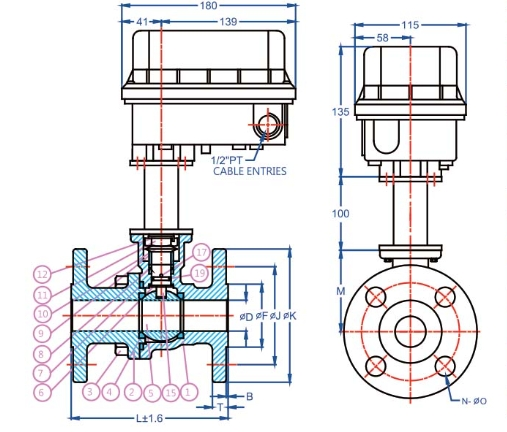
Firstly, determine your company's pipeline diameter and the required valve size and connection method.
Secondly, based on pipeline requirements, establish common parameters for the electric ball valve, such as discharge capacity, allowable flow resistance, and seat hole diameter.
Thirdly, consider the pipeline's operating temperature and select suitable materials accordingly, taking into account the working pressure as well.
Additionally, it's essential not to rush into product selection. Understand the available electric ball valve products and their performance by obtaining catalogs and styles from multiple manufacturers. Comparing products will help choose the most cost-effective one.
Furthermore, besides considering pipeline parameters, pay attention to the environmental conditions where the valve will operate, as they significantly influence the duty status of the electric device within the valve. Typical environments include indoor installations with outdoor protection, outdoor installations exposed to wind, sand, rain, and sunlight, areas with flammable or explosive gases or dust, humid and hot tropical or arid regions, high-temperature pipeline media exceeding 450°C, extremely low temperatures below -20°C, flood-prone or submerged areas, environments with radioactive substances (such as nuclear power plants and radiation test facilities), ships or docks with salt spray, fungi, and dampness, locations with severe vibrations, and areas prone to fires.
For electric ball valves in the mentioned environments, their electric device structures, materials, and protection methods differ. Hence, choose the appropriate valve electric device according to the specified operating conditions.
Regarding functionality requirements, electric ball valves achieve control functions through their electric devices. The aim of using electric ball valves is to achieve non-manual electrical control or computer control of valve opening, closing, and regulation. As the application of electric devices increases and control requirements become more complex, the design of electric control for ball valves keeps evolving, introducing new and diverse electrical control methods. Therefore, when considering overall valve control, pay attention to selecting the appropriate control method based on engineering requirements, such as centralized control, single-unit control, equipment interlocking, sequence control, or computer sequence control.
In conclusion, the selection of electric ball valves and their electric control methods are equally critical for engineering projects, considering the significant differences in functionality and quality among various manufacturers' products. Therefore, technical discussions with valve electric device manufacturers are essential to clarify technical requirements beyond the standard electrical control principles provided in valve electric device sample manuals.
